One of the first rules of laundry is to separate your clothing before washing it.
No one likes it when their new top comes out of the wash with stains on it from the other items of clothing, and separating your white items from your dark ones prevents this from happening. This means your clothes can keep their pristine state for much longer.
Despite this, many people out there ignore this rule without noticing any adverse effects on the state of their clothing.
This begs the question: can you wash black and white clothes together with no risk, or are these individuals just lucky?
Read on to find out the honest answer to this question and learn our top tips for preventing colour transfer when washing black and white clothing together.
Can You Mix Black and White Laundry?

Mixing black and white washing together is usually a bad idea. Coloured clothing contains dyes that are prone to leaking during a wash cycle, leaving your lighter clothing with unwanted stains and discolouration.
That being said, there are some cases in which the benefits of throwing all your clothes together outweigh this risk.
For example, perhaps you’re only doing your own laundry and never have a full load when separating your clothing.
Washing white and coloured clothes together might also be beneficial if you urgently need something cleaned and only have time for one wash cycle.
In these instances, we highly recommend that you take the following precautions to minimise the risk of colour transfer.
What to Do If You Need to Wash Black and White Clothes Together
1. Use cold water
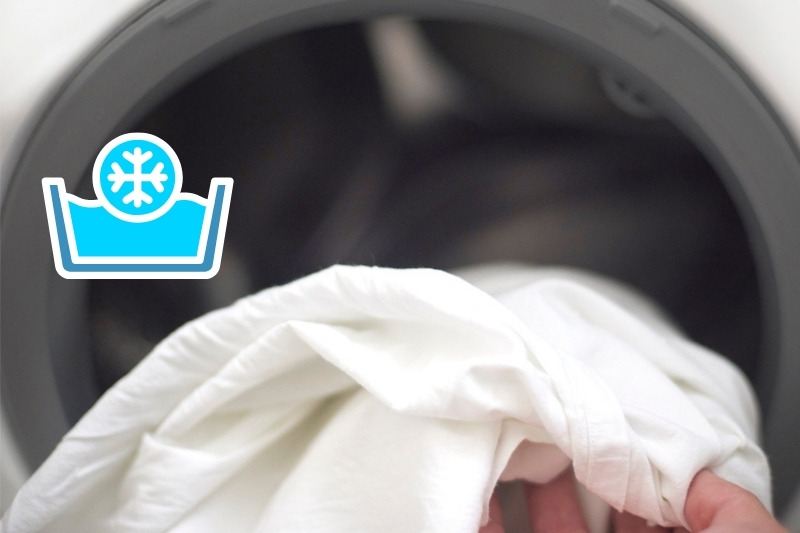
When washing a mix of white and black clothing, it is best to stick to a cold wash. The risk of the dye leaking from the fabric is higher when washing at a high temperature because the heat causes the fibres in the fabric to loosen.
The temperature at which colours run will vary depending on the fabric and dye used in an item of clothing, so sticking to a cold wash is the safest option.
When washing clothes in cold water, you need to make sure you’re using a suitable laundry detergent.
Although some washing powders work well at low temperatures, liquid detergent will generally be more effective as it can dissolve more quickly in cold water.
2. Use a colour catcher
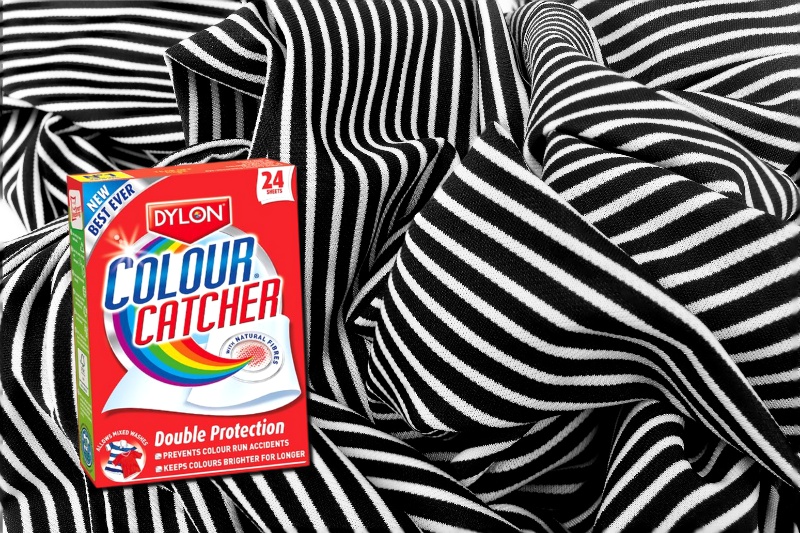
If your clothes are really dirty and require a hot wash, we suggest throwing a colour catcher in with your laundry.
These sheets absorb any dye that your clothing releases, stopping it from being absorbed by your white clothes.
However, colour catchers aren’t always 100% reliable, so it’s best to take care when using these products.
3. Choose a quick wash
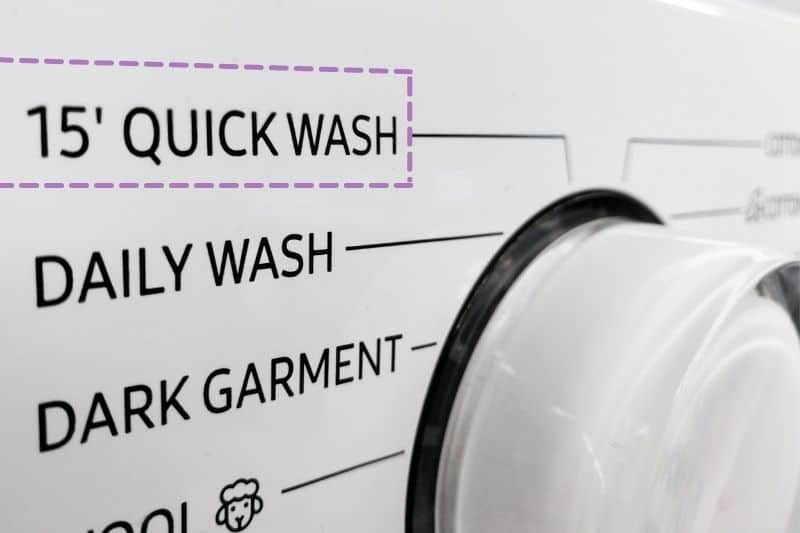
When mixing darks and lights, choosing the shortest wash setting on your machine is also a good idea.
Studies have shown that quick, cold washes significantly reduce the amount of dye leakage and transfer, meaning your garments stay pristine for longer.
This is because shorter washing cycles allow less time for any colour transfer to occur.
Unfortunately, there are some drawbacks to using a quick wash cycle. For example, quick washes are great for freshening up your clothes but don’t do such a great job when your clothing is badly soiled. In this case, a normal wash cycle will be required to clean your clothes properly.
4. Always separate new coloured clothing
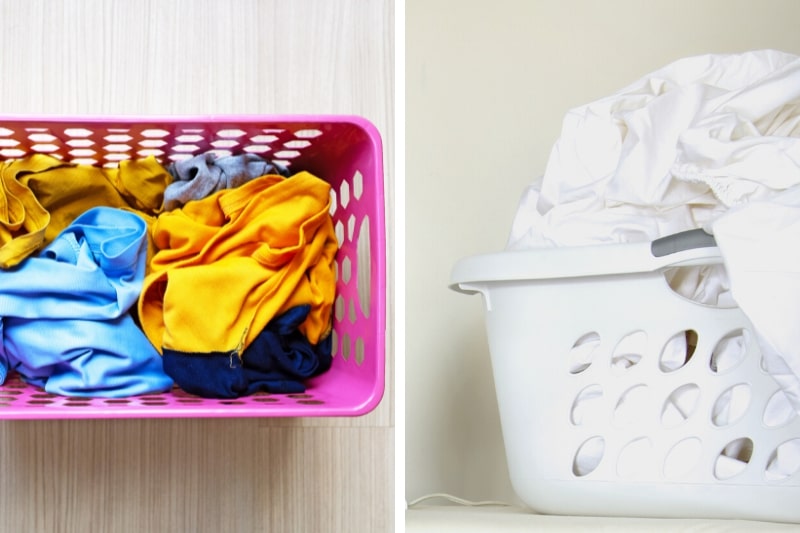
Our final tip for washing white and black clothing together is to always separate new coloured clothing from your whites.
When clothing is brand-new, any dye used to colour the fabric is still fresh, and fresh dye is much more likely to bleed out onto other garments.
Once you have washed your new item of clothing a few times, it will be fine to throw it in the wash with the rest of your laundry, provided you follow the steps above.
Alternatively, you can soak your garment for 30 minutes or so to see if the dye runs. If there is no leakage, the new item of clothing will be okay to go in the wash with all your other clothes.
Can You put Black and White Clothes in the Dryer Together?
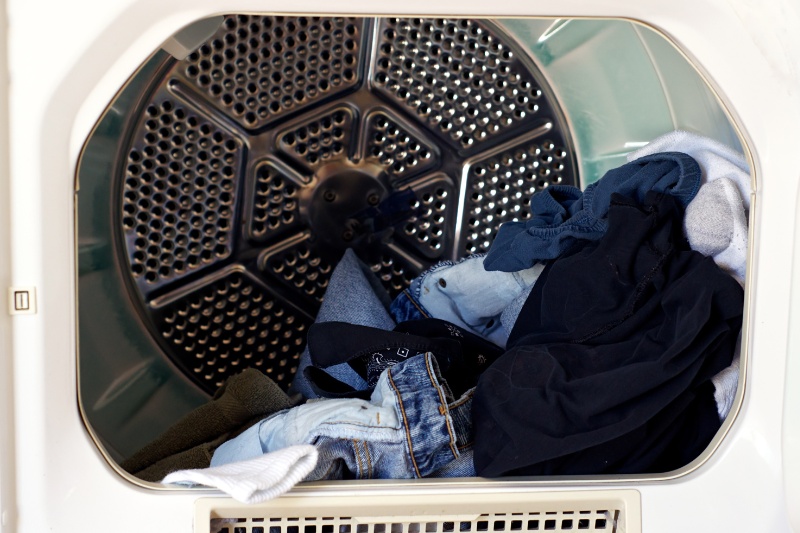
Many people believe the risk of bleeding dye is only something that occurs when washing your clothes in the machine. Unfortunately, this is not true!
Colour bleeding can occur at any point when wet pieces of clothing come into contact. When throwing clothes into the dryer, this is unavoidable. Therefore, black and white clothes shouldn’t be tumble-dried together either!
The high temperatures your dryer will reach during its cycle also increase the risk of dye transfer and staining for the same reasons as hot water (see above).
It is thus always best to both wash and dry your clothes separately if you want to keep them looking their best for longer.
How to Separate Clothes for Washing

One of the reasons people choose to wash their white and black clothing together because they don’t know how to sort their laundry correctly.
Separating clothes for the wash can be a confusing task, especially as there are so many ways you can choose to sort the garments.
Nonetheless, we recommend separating your clothes whenever possible, as this will increase their lifespan.
You can separate your clothes for the wash in various ways, but the easiest way is to sort them based on colour.
Ariel suggests sorting your clothing items into the following groups: whites, lights, darks, and delicates.
If an item has both white and black patches on it, you can add it to the whites, as the black dye will not be prone to bleeding.
It is also beneficial to further break these groups down based on fabric type and each garment’s label instructions.
However, this isn’t plausible for people who only have small amounts of washing at a time, so stick to simply separating by colour if your washing pile isn’t big enough.

Hannah has a passion for cleaning. She worked her way around Australia by cleaning hostels in exchange for free accommodation and used her cleaning skills to bag a job as a chalet host for a luxury ski company in France.






